TCL's C845 Mini LED TVs strike the perfect balance between premium features and affordability
With cutting-edge Mini LED technology, the TCL C845 series delivers a whole lot more than you bargained for.
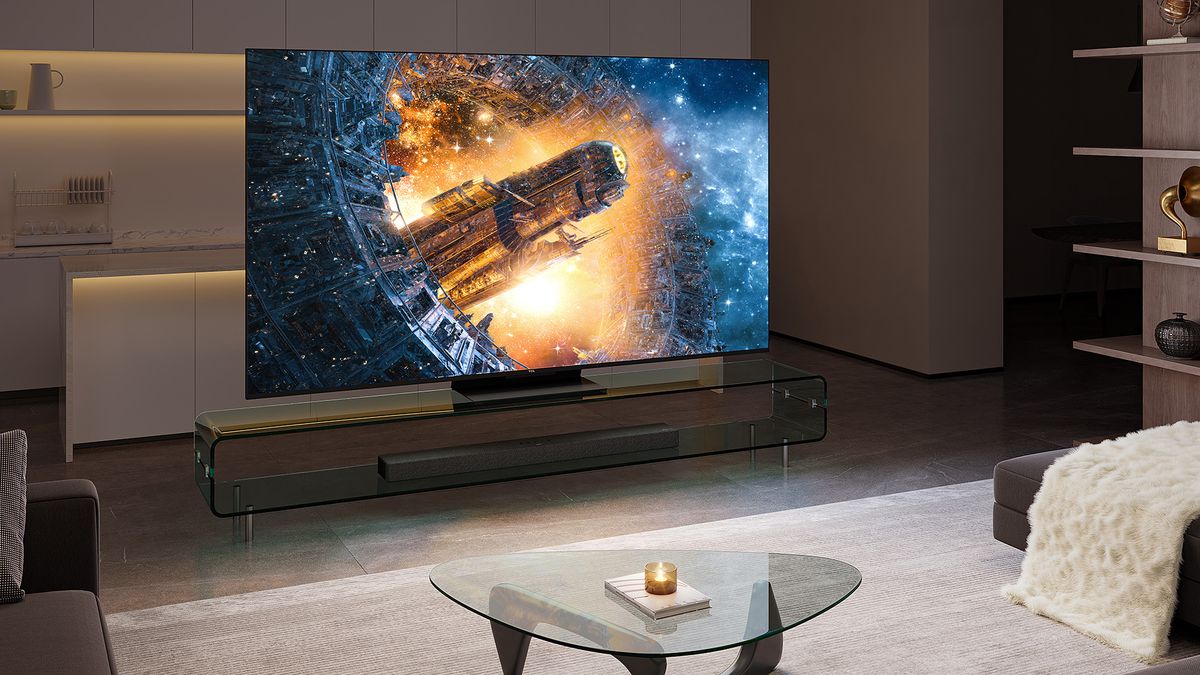
When you read the verdict of a TV review, or indeed any consumer technology review, there’s often a sentence saying, ‘Of course you can pay more to get more’ – meaning that the product is great at its price, but more expensive models generally offer more. Of course they do.
Yet TCL’s C845 Mini LED TVs confound that notion. They’re loaded with premium features. They use a premium 4K screen technology. They offer very impressive, award-winning performance.
Where the C845s defy expectations however, is pricing, which falls more decidedly into the midrange, with the 55-inch at AU$1,999, the EISA award-winning 65C845 at AU$2,999, the 75-incher at AU$3,999, and the wall-filling 85-inch giant TV for AU$4,999.
And what you get is amazing bang for buck…
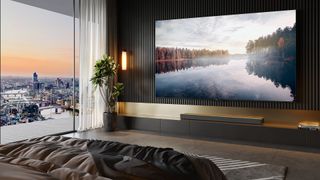
Industry-benchmark Mini LED
TCL was the first TV maker to bring Mini LED panels to market – a technology where thousands of tiny backlights are combined with quantum dot (QD) colour. Each year, the company has developed Mini LED technology further, this year doubling the zones and upgrading the LEDs, resulting in a screen performance which not only challenges OLED panels that cost near-double the price, but clearly beats them in several key areas – notably brightness.
The C845 range can hit a dazzling 2,000 nits peak brightness during high dynamic range (HDR) playback, far beyond OLED capabilities, while the full array and local dimming of Mini LEDs also deliver deep graded blacks, revealing otherwise lost details in areas of shadow. Remember that famously dark battle scene in season 8 of Game Of Thrones – the one that was unwatchably dark on so many TVs? On the C845, you wouldn’t miss a thing. It’s fully compatible with multiple HDR standards, including Dolby Vision content on Netflix, HDR10+ content on Amazon Prime, and even the latest IMAX Enhanced content on Disney+. The inclusion of Dolby Vision IQ allows the TV to adjust HDR performance to perfection using a built-in sensor to judge the room conditions and tweak accordingly.
This extended dynamic range brings out the best in movies and streaming content. The brightness of Mini LED combined with the sharp colours of quantum dot is also able to deliver highly accurate colour performance: 100% of the DCI-P3 colour space – or to put it another way, every colour that a cinema camera is capable of capturing.
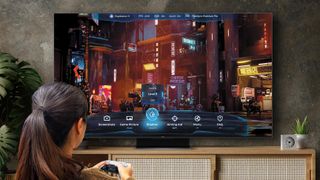
Gaming giants
Imagine plugging your gaming console into an 85-inch C845 TV – total immersion, and no snipers hiding in those well-defined shadows. There’s full gaming support for the latest consoles across the C845 range, compatibility and minimum lag times ensured by the inclusion of HDMI 2.1, Game Master 2.0, ALLM, 144Hz VRR and FreeSync Premium Pro. For HDR game content, the Dolby Vision ‘game’ setting puts the TV set into close collaboration with the console, which pre-processes its output, further minimising latency from TV processing.
TCL’s special Game bar pops up as soon as your console is connected, putting you in full control of the settings and the action, while the improved processor this year (AiPQ 3.0 over the previous 2.0) keeps everything running smoothly and glitch-free across all TV operations.
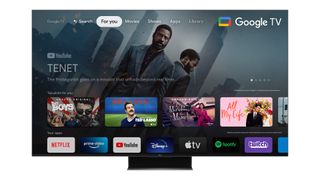
Google TV smarts
There are few things on a modern smart TV more important than ease of set-up and then ongoing use. The C845 range uses the Google TV operating system, a variant of Android TV, which for many users will be pleasingly familiar, while it’s famously simple to use even for newcomers. The TVs are compatible with Amazon’s Alexa for voice control, but as Google devices they work most seamlessly with Google Assistant, with built-in microphones both on the TV and available on the remote control.
Some TV manufacturers use their own operating systems, which often offer some apps while lacking others. No so with Google TV, which brings full access to all its thousands of available apps, including comprehensive coverage of all Australian terrestrial catch-up services and all the major streaming services, both paid and free.
There’s a nice bonus in TCL’s own channel, with a dedicated button on the remote leading through to 80+ live channels and quite the collection of on-demand content – partly by including the popular Plex streaming platform inside the TCL content – and all for free.
For access to all these streaming movies and shows, the C845 models connect to your home network via Ethernet or dual-band Wi-Fi, and that further allows easy sharing of content from phones, tablets and laptops. As a Google TV, there’s Chromecast sharing built-in, but there’s also AirPlay support via which Apple users can throw their content to the TCL.
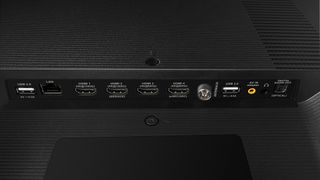
Connections & sound
The physical inputs for video sources and gaming include four HDMI inputs of varying capability up to HDMI 2.1 at 4K/144Hz; there’s a legacy minijack composite AV input with an adapter cable supplied, also two USB-A sockets, Bluetooth, a headphone output and an optical digital output.
This last can be used for playing TV sound out to a sound system, though if you’re running a big multichannel speaker system the highest levels of surround can be accessed using the HDMI socket with eARC.
But you may find yourself perfectly content with the solid built-in sound of these TVs, which are compatible with Dolby Atmos and DTS:Virtual X, using a 2.1-channel speaker solution branded to Onkyo, the 0.1 being a dedicated bass driver highlighted prominently on the back of the TV.
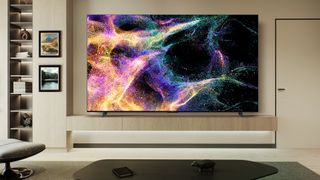
The little things that matter
It’s not mentioned in the specs, but there’s a small innovation here that could be a genuine problem solver. Assuming you’re not wall-mounting the TV, you attach the stand to a C845 using two choices of screw holes – one set high, one set low. The higher set puts the TV close to the bench top, the others will lift it higher, and if you plan to use a soundbar in front of the TV, the latter are the ones to use. Simple, sure – but we don’t know of another TV that does this. We like such attention to detail.
See what we mean? TCL’s C845 range proves that you don’t always need to ‘pay more to get more’. The premium features here and the remarkably affordable pricing instead prompt the simpler but more exciting conclusion: why would you pay more?
Get the What Hi-Fi? Newsletter
The latest hi-fi, home cinema and tech news, reviews, buying advice and deals, direct to your inbox.
